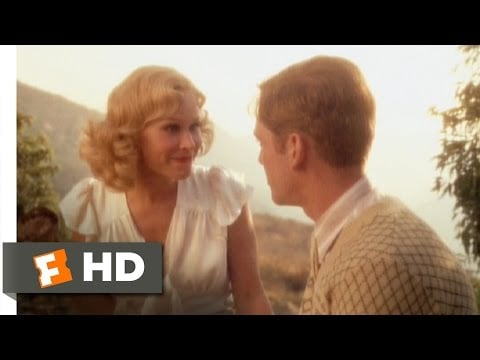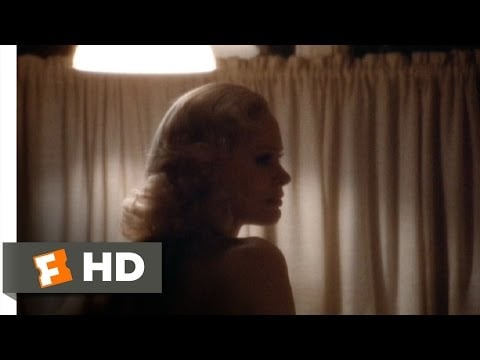John Schlesinger’s “The Day of the Locust” (1975) is finally available after decades of being out of print.
Following its box office failure, Schlesinger’s unsettling, robust epic, depicting characters struggling for work during the Golden Age of Hollywood, could only be seen on a murky VHS transfer. Now, thanks to Arrow Video, the film has been remastered on Blu-ray, with loads of extra features and a commendable new print of the film itself.

Based on Nathanael West’s 1939 novel of the same name, “The Day of the Locust” is a sprawling ensemble piece, set during the Golden Age of 1930’s Hollywood, focusing on the activity in the lives of three figures: a starstruck writer named Tod Hackett (William Atherton), a starlet named Faye Greener (Karen Black) and a kind, meek man named Homer Simpson (Donald Sutherland).
Their interactions are long and tortured, as their levels of success, social acceptance and personal worth fluctuate wildly throughout the story.
This was among the first films I’ve ever seen to suggest that personal and moral sacrifices are essential to becoming a successful film artist, in a career full of opportunities for moral compromise. Call it the anti-“Singin’ in the Rain,” as no one here finds the kind of Happy Ending that typically greets Tinseltown characters and filmgoers in the comfort of a movie theater.
In fact, there’s a legendary climax that takes place during the premiere of Cecil B. DeMille’s “The Buccaneer” which erupts into a horrifying, apocalyptic explosion of chaos. There are two things about “The Day of the Locust” that have never left me: one is the image of a dead horse at the bottom of a swimming pool, jokingly noted as a decoration (but is it?).
Then there’s the aforementioned grand finale, which is so shattering there’s just no way to prepare for it.

It’s a shocking, bitter film, designed in part to spin a tale of moral degradation and artistic rot in pursuit of fame, but also a cautionary tale on how the struggle for a Hollywood breakthrough will only find many opportunities to lose one’s dignity.
It’s noteworthy that the film was released by Paramount Pictures and makes reference to the studio, since this is as anti-Hollywood as it gets. If “Singin’ in the Rain” extolled the value of pursuing your dreams, applying your talent, pushing through setbacks and finding true love in the midst of personal glory, then this is the film to sober anyone out of such optimism.
Most of the characters are complex, behave in contradictory ways and are often impossible to like. Note the ever-present chocolate ice cream cone – Faye is childish and unstable, an unkind, driven and fickle would-be star.
Yet Faye is also savvy enough to be too much for Simpson, who is kind and patient in a way that this environment pushes to the very edge.

Black is fearless in the role that should have elevated her career (instead of hurting it). Atherton finds the right notes in playing a character that, like his co-stars, I always found fascinating but impossible to root for.
Atherton is best known for playing persnickety villains (“Ghostbusters” and “Die Hard” became his calling cards) but note how well he makes Hacket grapple with a moral conscience but is unable to pry himself from his obsession with Faye.
Simpson explains to Faye how, as a child, he found a way to eat liver by covering it up with bread, his way of saying that working in Hollywood is kind of like that. Not even “The Player” (1992) is this bitter about the film industry and how it devours the innocent and enables the immoral.
Why would anyone want to watch a movie like this? Because Schlesinger’s directing and the work of his cast are extraordinary and the film, as savage as it gets, has one amazing set piece after another.
“The Day of the Locust” is difficult and challenging for how extreme its climactic sequence is and for how off-putting the characters can be. It’s also one of the richest, most unguarded and spectacular films ever made about the allure and trap of Hollywood fame.
Damien Chazelle’s “Babylon” (2022) is a strikingly similar film, and the comparison came into focus with the release of Chazelle’s equally controversial and superior work, which was also a major box office flop. Both are among the greatest films ever made about seeking fame and creative fulfillment in a vile environment where everyone is out to use and exploit the innocent.
NEW @ArrowFilmsVideo US & CAN TITLE: The Day of the Locust (Limited Edition Blu-Ray)
Academy Award®-winner John Schlesinger adapts an acid satire of Hollywood decadence and broken dreams with Donald Sutherland starring.
Pre-order in the US via Arrow: https://t.co/DeP6QMuASK… pic.twitter.com/An8qhPUYem
— Dawn of The Discs (@dawnofthediscs) September 29, 2023
I don’t share the dour cynicism towards Tinseltown and Hollywood artists present in “The Day of the Locust” (or, for that matter, “The Player”). That said, history provides us with dozens of anecdotes of actors and artists who were abused and devoured by the movie studio system, then and now.
“Babylon” mirrors Schlesinger’s film in several ways (both are from Paramount Pictures!), but it’s difficult to imagine another studio releasing something this pessimistic about the companies that release motion pictures and the denizens who work for them.
Schlesinger’s film came after his groundbreaking Best Picture winner and pop culture phenomenon “Midnight Cowboy” (1969) and before his unforgettable “Marathon Man” (1976). By most accounts, the making of “The Day of the Locust” was miserable and difficult. Yet, the end result isn’t a flawed work with visible seams but a searing, hot-tempered masterpiece.
Except for out-of-print and murky VHS and DVD transfers, it’s been impossible to find for years. Seeing the film now, cleaned up and uncut, is to witness an ahead-of-its-time and depiction of artistry and self-destruction in unison.
The post How ‘Day of the Locust’ Out-Babyloned ‘Babylon’ appeared first on Hollywood in Toto.